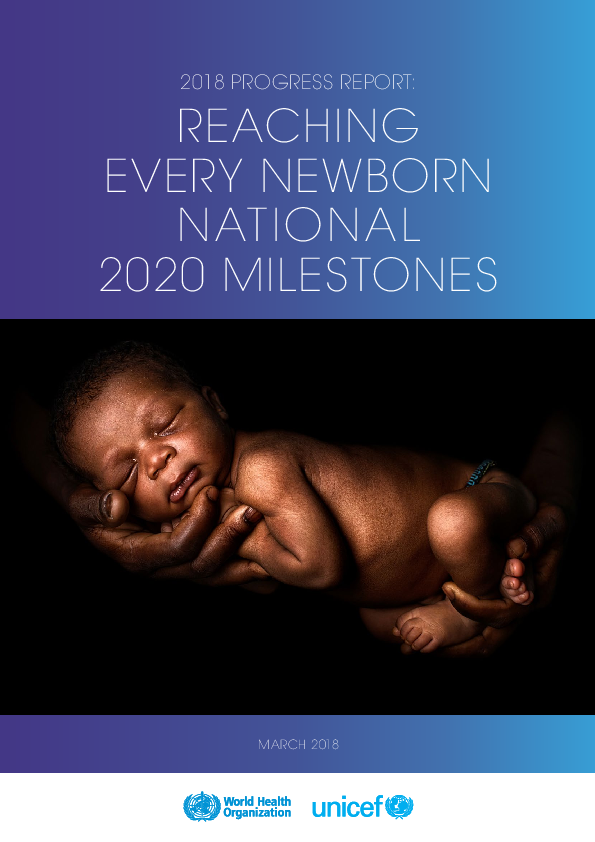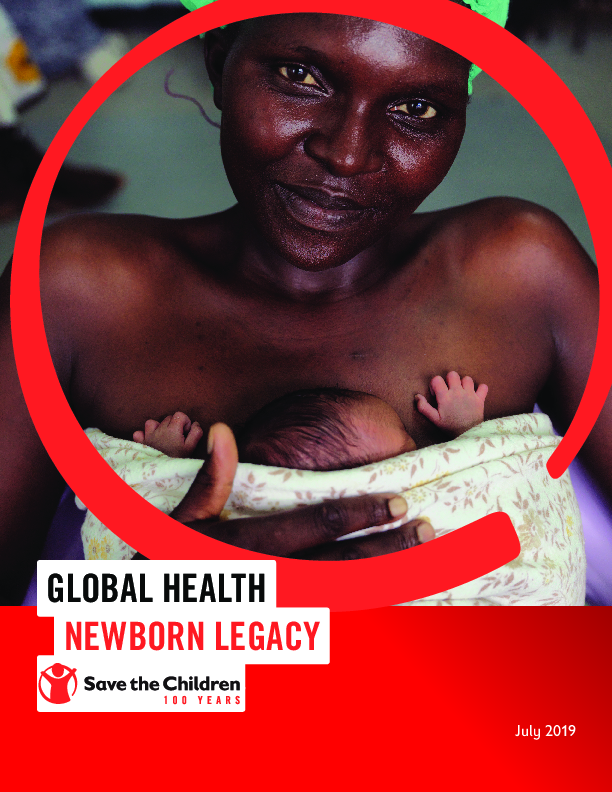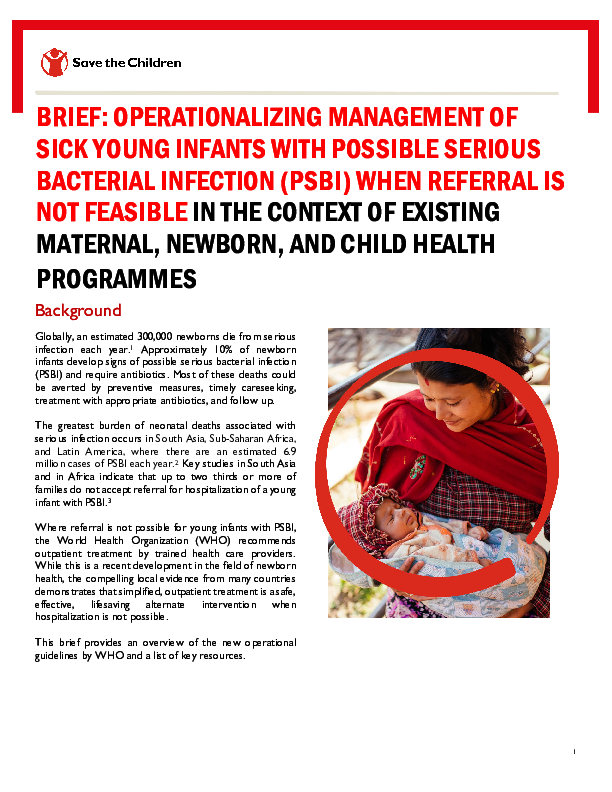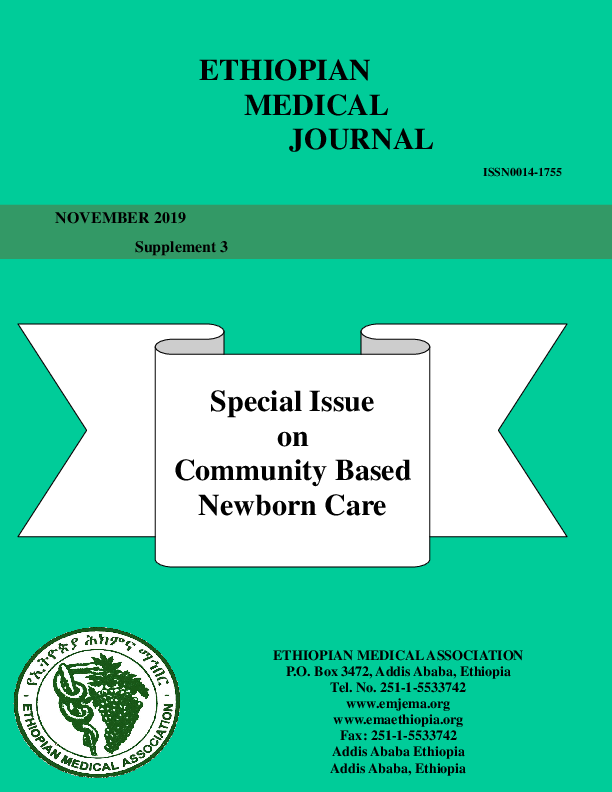
Reports
Every Newborn Progress Report 2019
Publication year:
2019
English
Format:
pdf (15.5 MiB)
Publisher:
UNICEF, United Nations Children's Fund,WHO, World Health Organization
The past 30 years have seen remarkable progress in child survival and newborn health in all regions of the world. The global Newborn Mortality Rate declined by more than half between 1990 and 2018, from 37 deaths per 1000 live births to 18 deaths per 1000 live births. Yet, the fact remains, the risk of dying is highest in the time around birth and the first month of life. Newborn deaths represent 47% of all under-5 child mortality, accounting for 2.5 million deaths in 2018. This is 7000 newborn deaths each day. Ninety-eight percent of newborn mortality occurs in low- and middle-income countries (LMICs) and 78% occur in sub-Saharan Africa and Asia. In addition, 2 million stillbirths are estimated to have occurred in 2017; 50% of these were intrapartum stillbirths where death occurs after the onset of labour and before delivery, with the infant born without signs of life. An estimated 98% of stillbirth occur in LMICs and the third semester stillbirth rate in south Asia and Sub-Saharan Africa is approximately 10 times that of developed countries. The Every Newborn Action Plan (ENAP) estimated that 3 million lives – mothers, newborns and stillbirths – could be saved each year with universal coverage of quality maternal and newborn care. Furthermore, 1.3 million newborns survive each year with major disabilities. Most disabilities are preventable and disability is a sensitive marker of the quality of maternal and newborn care. The unfinished business of ending preventable newborn deaths and stillbirth looms large. It is estimated that about 140 million births will occur per year by 2030. At the current rate of progress, and 26 million newborns will die by 2030. Based on current trends, an equal number of families will experience a stillbirth. Through a strategic priority setting, we can change this. Strengthening health systems to deliver the best outcomes for the 140 million births per year with the strategic adoption and effective implementation of policies, programs, and technologies that can target the leading causes death and disability holds great promise for global health progress. “High-quality health systems could prevent 1 million newborn deaths and half of all maternal deaths each year”. Delivering universal, high-quality maternal and newborn care requires many concrete actions that are well known and within most countries’ capacity to implement. The necessary elements include ensuring the availability of essential medicines and commodities; compliance with evidence-based clinical interventions and practice; an adequate hygiene infrastructure; competent and motivated staff; as well as solid documentation and use of information. In summary, it requires an intensive effort that will transform care at a critical time in the life-cycle. Taking action will have a powerful positive impact on the health and life opportunities of future generations.
Read full abstract
Authors
View & Download
English
2 Documents
Document information
Authors
Format
Content type
Rights
© Author/Publisher
Found a mistake? Help us improve!
If you have noticed a document assigned to the wrong author or any other inaccuracies, let us know! Your feedback helps us keep our data accurate and useful for everyone.
Related Documents
Showing 4 of 5
Share
Link





